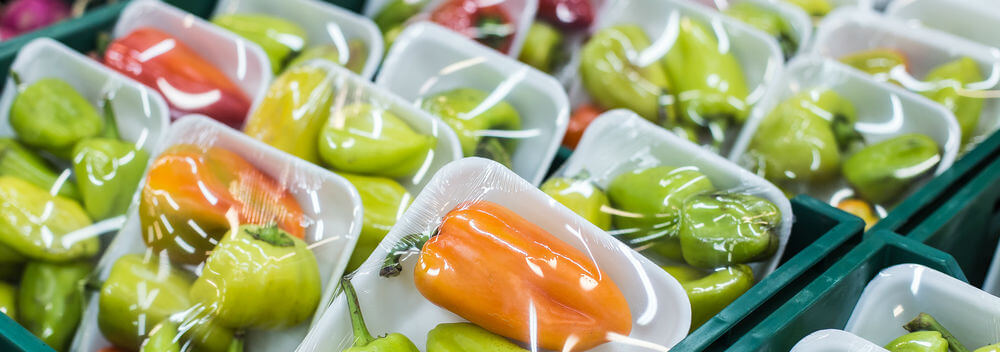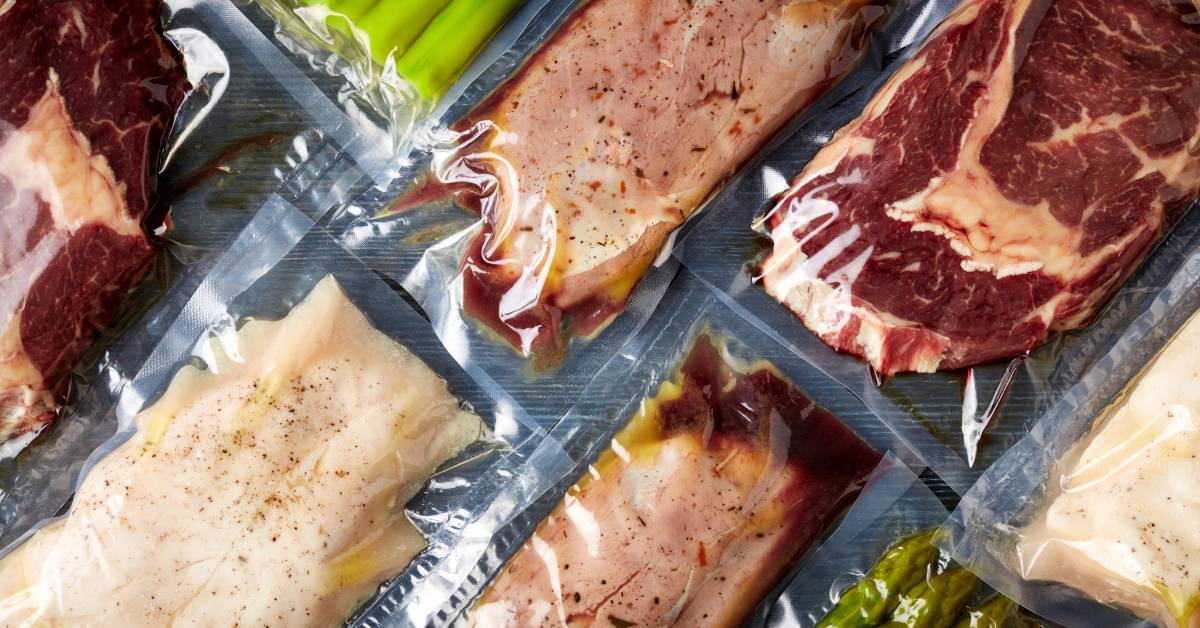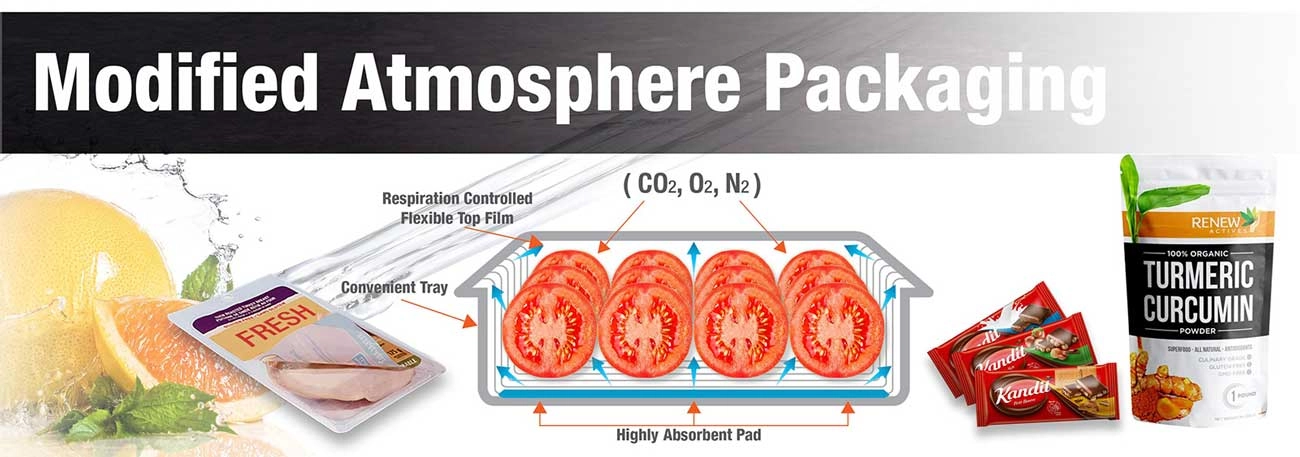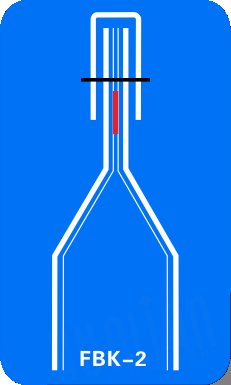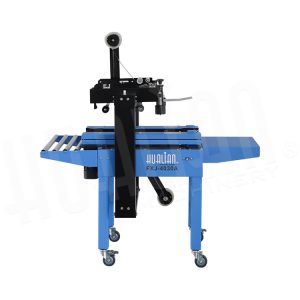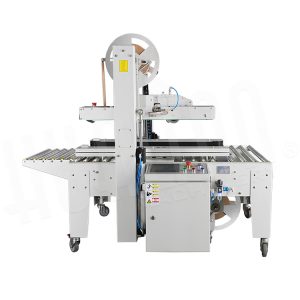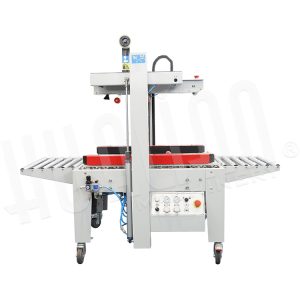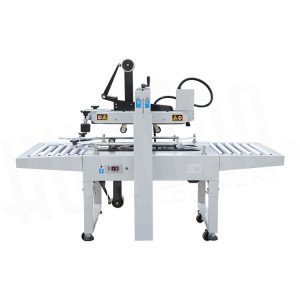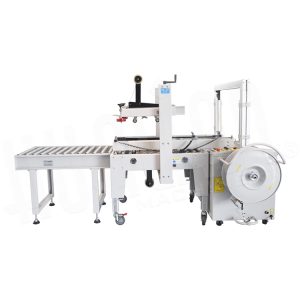Table of Contents
ToggleIntroduction
The food industry is a race against time. From the moment a product is harvested, processed, or prepared, it begins to degrade. For decades, producers have relied on refrigeration, preservatives, and freezing to slow this process. But as consumers increasingly demand fresh, high-quality, and minimally processed foods, a new technology has emerged as a game-changer: Modified Atmosphere Packaging, or MAP.
What is MAP Packaging?
At its core, modified atmosphere packaging is a packaging technology that replaces the air inside a food package with a specific, carefully controlled mixture of gases. This new atmosphere is designed to slow down the natural process of spoilage and extend the product’s shelf life.

Explore Our MAP Tray Sealer Machine Now!
The most common gases used in MAP are:
- Nitrogen (N2): An inert gas that displaces oxygen to prevent oxidation (rancidity) and inhibit the growth of aerobic bacteria. It also acts as a filler to maintain package shape and protect fragile items.
- Carbon Dioxide (CO2): An active gas that inhibits the growth of many spoilage bacteria and mold. It’s highly effective but can be absorbed by some products, potentially causing the package to collapse.
- Oxygen (O2): While often removed, oxygen is crucial for certain products. For fresh red meat, a high-oxygen environment is used to maintain its bright red color. For fruits and vegetables, a low-oxygen environment slows down respiration, which is the natural process of ripening and decay.
The Importance of MAP in the Food Industry
The importance of modified atmosphere packaging cannot be overstated. It offers a powerful way to enhance food safety, reduce waste, and meet consumer expectations. By controlling the environment inside the package, MAP allows food to stay fresh for significantly longer without the need for chemical additives. This directly addresses the growing demand for clean-label products.
A Brief History of MAP Technology
The concepts behind MAP technology aren’t new. The idea of controlling the atmosphere to preserve food dates back to the early 20th century with the use of controlled atmosphere storage for fruits and vegetables. These large-scale facilities would maintain specific gas compositions to keep produce fresh for months. Over time, this technology was adapted and miniaturized for individual packages, leading to the development of modern MAP packaging. Today, it’s a sophisticated science that relies on advanced MAP packaging equipment and precise gas mixing systems.
How Does Modified Atmosphere Packaging Work?
The fundamental principle of MAP packaging is to create an ideal environment within the package that actively slows down the natural spoilage of food. This is achieved by removing the ambient air and replacing it with a carefully selected gas mixture.
Principles of MAP
The process involves a simple, yet critical, sequence:
- Air Removal: The first step is to evacuate the air from the package, either by creating a vacuum or by flushing it out. This removes the primary spoilage agents: oxygen and airborne microorganisms.
- Gas Flushing: Once the air is removed, a precise mixture of gases—typically nitrogen (N2), carbon dioxide (CO2), and sometimes oxygen (O2)—is injected into the package.
- Sealing: The package is then hermetically sealed to prevent the new gas mixture from escaping and to stop ambient air from re-entering.
The specific gas mix is a tailored solution for each product. For instance, high CO2 levels inhibit the growth of bacteria and mold, while high N2 levels displace oxygen to prevent oxidation (rancidity) in products like snacks. For fresh red meat, a high-oxygen mixture is essential to maintain its vibrant red color.
Packaging Materials for MAPs
The effectiveness of modified atmosphere packaging depends heavily on the packaging materials used. Unlike standard food packaging, MAP requires high-barrier films and trays that can effectively contain the gas mixture and prevent outside air from seeping in.
Key characteristics of MAP packaging materials include:
- Low Gas Permeability: The film must be a strong barrier to gases like oxygen, carbon dioxide, and nitrogen to maintain the integrity of the modified atmosphere over the product’s shelf life.
- Good Sealing Properties: The film and tray must be able to form a complete, airtight seal to prevent any leakage.
- Durability: The packaging must be robust enough to withstand the stresses of transportation and handling without compromising the barrier.
Common materials used for MAP trays and films include laminates of plastics like PET (polyethylene terephthalate) and PP (polypropylene) combined with barrier layers like EVOH (ethylene-vinyl alcohol copolymer). Choosing the right material is a critical step in the MAP packaging process to ensure the desired shelf life and product quality are achieved.
Learn more: How Does Modified Atmosphere Packaging Work?
Benefits of Modified Atmosphere Packaging
The advantages of using modified atmosphere food packaging are extensive and contribute to a more efficient, profitable, and sustainable food supply chain.
| Benefit | How It Works |
| Extended Shelf Life | Keeps products fresh for days or weeks longer by slowing down spoilage. |
| Enhanced Quality | Maintains the product’s color, texture, and flavor. |
| Reduced Food Waste | Less spoilage means fewer products are thrown away. |
| Increased Market Reach | Allows for shipping over longer distances. |
| Fewer Preservatives | Provides a natural way to preserve food without artificial chemicals. |
| Cost-Effective | Saves money in the long run by reducing waste and returns. |
Extended Shelf Life
This is the most significant benefit. By slowing down microbial growth and oxidation, MAP can extend the shelf life of many products by 50% to 500%. For instance, fresh pasta might last 3-4 days in air, but with MAP, its shelf life can be extended to 20-30 days.
Enhanced Product Quality and Appearance
MAP helps preserve the sensory qualities of food. For meat, a high-oxygen MAP mix maintains a vibrant red color. For baked goods, a nitrogen flush prevents them from being crushed. For produce, it helps retain texture and color, making the products more appealing to consumers.
Reduced Food Waste
Longer shelf life means fewer products are thrown away due to spoilage. This is a huge win for both businesses and the environment.
Increased Market Reach and Distribution
With a longer shelf life, products can be shipped greater distances and spend more time on store shelves. This allows producers to access new markets and distribute their goods more widely.
Reduced Need for Artificial Preservatives
MAP provides a natural preservation method, allowing manufacturers to create “clean label” products that appeal to health-conscious consumers.
Cost-Effective
While there is an initial investment in MAP packaging equipment, the long-term savings from reduced food waste, fewer product returns, and expanded sales often make it a highly cost-effective solution.
Applications of Modified Atmosphere Packaging Across Industries
MAP is a versatile technology used for a vast array of food products. The specific gas mixture is always tailored to the unique needs of the food item.
- Meat Packaging: For fresh red meat like beef steaks, a high-oxygen mix (O2 80%, CO2 20%) is used to maintain the red color. For processed meats like sausage and bacon, a gas mix with high CO2 and N2 is used to inhibit bacteria and prevent discoloration.
- Seafood Packaging: A high CO2 and N2 atmosphere is used to inhibit the growth of common spoilage bacteria in fish and shellfish, extending shelf life.
- Fruits and Vegetables Packaging: The goal is to slow down respiration. A low-oxygen, high-carbon dioxide mix is often used to prevent ripening and spoilage, especially for ready-to-eat salads and cut produce.
- Bakery Products Packaging: The main spoilage factor is mold. MAP, using a high CO2 and N2 atmosphere, effectively inhibits mold growth, dramatically extending the shelf life of products like muffins, bread, and pastries.
- Dairy Products Packaging: For items like hard cheeses and milk powders, an inert gas like nitrogen is used to prevent rancidity and inhibit mold.
- Ready-to-Eat Meals and Prepared Foods: A tailored MAP solution is often used to keep ingredients fresh and prevent the growth of bacteria in complex dishes.
- Snacks and Dry Foods: Products like potato chips and nuts are typically flushed with pure nitrogen to prevent oxidation and breakage, keeping them crisp and flavorful.
MAP Packaging Equipment and Technology
Implementing MAP requires a dedicated set of machines and systems to ensure a precise and consistent process.
Key Packaging Machinery for MAP
- MAP Tray Sealing Machine: This is one of the most common types of MAP packaging machines. It takes a pre-formed tray, fills it with the product, and then seals a film on top after flushing it with the desired gas mix. MAP tray sealers are highly popular for ready-meals, fresh meat, and salads.
- Thermoforming MAP Packaging Machine: This all-in-one machine forms the package from a roll of film, fills it with the product, flushes it with gas, and then seals it. This is a highly efficient solution for high-volume production.
- Vacuum Gas Flushing Machine: This is the core component of many MAP systems. It first pulls a vacuum to remove ambient air and then injects the new gas mix before the final seal.
Gas Mixing and Control Systems
The heart of any MAP setup is the gas mixing system. These systems, which range from simple to highly sophisticated, ensure the precise blend of gases (O2, CO2, N2) is delivered to each package. They are crucial for maintaining consistency and product quality.
Essential Components and Considerations
While the main machinery forms the core of a MAP packaging line, several other components and considerations are crucial for a successful operation. The effectiveness of the entire MAP packaging process hinges on a perfectly coordinated system.
- Gas Mixing Systems: The heart of any MAP setup is the gas mixer. This equipment takes individual gas cylinders (N2, CO2, O2) and blends them into the precise ratio required for a specific product. Consistency and accuracy are non-negotiable here.
- Gas Analyzers: To ensure every package has the correct gas mixture, on-line or off-line gas analyzers are used. These tools measure the gas composition inside a sealed package, providing a critical quality control check to prevent spoilage and maintain brand reputation.
- Sealing Dies and Materials: The seal is the most vulnerable part of a MAP tray. The sealing die on the machine must be perfectly calibrated to apply the right amount of heat and pressure to create a hermetic seal. Any imperfection can lead to gas leakage and product spoilage.
- Temperature Control: Modified atmosphere packaging works hand-in-hand with refrigeration. The modified atmosphere slows down the spoilage process, but a consistent, cold temperature is what keeps it dormant. Any break in the cold chain will accelerate spoilage, regardless of the gas mixture.
Disadvantages of Modified Atmosphere Packaging (MAP)
While the benefits are clear, it’s important to be aware of the potential drawbacks.
| Disadvantage | Explanation |
| Higher Initial Cost | Requires a significant investment in specialized machinery and films. |
| Operational Complexity | Demands technical expertise for gas calibration and machine maintenance. |
| Product Specificity | Each product needs a unique gas mix, so it’s not a one-size-fits-all solution. |
| Risk of Off-Flavors | An incorrect gas mixture can sometimes negatively affect the product’s taste or smell. |
| Film & Temperature Sensitivity | The barrier film and cold chain must be maintained to prevent failure. |
| Environmental Concerns | Relies on multi-layer plastics that are difficult to recycle. |
Higher Initial Cost and Investment
The machinery and specialized films for MAP are more expensive than traditional packaging solutions.
Complexity of Operation and Technical Expertise Required
The process requires careful calibration of the gas mix and maintenance of the equipment, requiring technical expertise.
Specificity to Product Type
A gas mix that works for red meat will spoil leafy greens, as each product requires a specific and carefully researched atmosphere.
Potential for Off-Flavors or Odors
An incorrect gas mix, particularly too high a concentration of CO2, can sometimes cause sour or off-flavors.
Film and Temperature Sensitivity
The effectiveness of MAP is highly dependent on the quality of the barrier film and a consistent temperature throughout the supply chain.
Environmental Considerations
MAP often relies on multi-layer, non-recyclable plastic films, which can be a challenge for businesses committed to sustainability.
Is MAP Packaging Safe?
Yes, MAP packaging is completely safe. The gases used—nitrogen, carbon dioxide, and oxygen—are all naturally present in the air we breathe. MAP is a physical method of food preservation, not a chemical one. It works by creating an environment that naturally inhibits the growth of bacteria and other microorganisms, making the food safer to eat.
Learn more: Is Modified Atmosphere Packaging Safe?
Modified Atmosphere Packaging vs. Controlled Atmosphere Packaging
These terms are often confused, but they have a key difference. Modified Atmosphere Packaging (MAP) refers to a static, one-time gas flush and seal within an individual package. The atmosphere will change slightly over time due to gas absorption and product respiration.
Controlled Atmosphere Packaging (CAP) refers to a dynamic system, typically in a large-scale storage room or warehouse, where the gas composition is continuously monitored and actively adjusted to maintain a specific atmosphere for an extended period.
Learn more: Modified vs Controlled Atmosphere Packaging
Choosing the Right MAP Solution for Your Business
Selecting the right MAP packaging technology for your business depends on several factors:
- Product Type: The specific food item you are packaging will determine the required gas mixture.
- Desired Shelf Life: How much extra shelf life do you need?
- Production Volume: For low volumes, a small MAP tray sealer might suffice. For high volumes, a thermoforming machine may be more efficient.
- Budget: Consider the initial investment in equipment, films, and gas, as well as long-term operational costs.
The Future of MAP Packaging
The future of MAP is focused on sustainability and smart technology. Research is underway to develop more environmentally friendly barrier films and integrate smart sensors that can monitor the gas composition within a package in real time.
Conclusion
Modified atmosphere packaging is a powerful and increasingly essential technology for the modern food industry. It offers a natural, effective way to extend shelf life, enhance product quality, and reduce food waste. By understanding the principles and applications of MAP, businesses can make informed decisions to improve their products and meet the evolving demands of today’s consumers.
Ready to find the right MAP packaging solution for your business? Explore our full range of MAP packaging machines and tray sealers on the Hualian to find the perfect equipment for your needs.

